
Cao Zhen, a researcher at the Institute of High Energy Physics (IHEP) under the Chinese Academy of Sciences (CAS), speaks at a press conference in Beijing, capital of China on May 17, 2021. (Xinhua/Jin Liwang)
BEIJING, May 17 (Xinhua) -- Chinese scientists have detected a dozen ultra-high-energy (UHE) cosmic accelerators within the Milky Way, a find that could overturn humanity's understanding of the galaxy and help reveal the origin of cosmic rays, which have puzzled scientists for a century.

A researcher answers questions at a press conference held at the IHEP under the CAS in Beijing, capital of China on May 17, 2021. (Xinhua/Jin Liwang)
The findings were based on the observations of China's Large High Altitude Air Shower Observatory (LHAASO), one of the country's key national science and technology infrastructure facilities, which is under construction in Daocheng, in southwest China's Sichuan Province.
The new discoveries were published in Nature on Monday.

Cao Zhen (L), a researcher at the IHEP under the CAS, conducts maintenance with staff members at China's LHAASO in Daocheng, southwest China's Sichuan Province, April 28, 2019. (Xinhua/Jin Liwang)
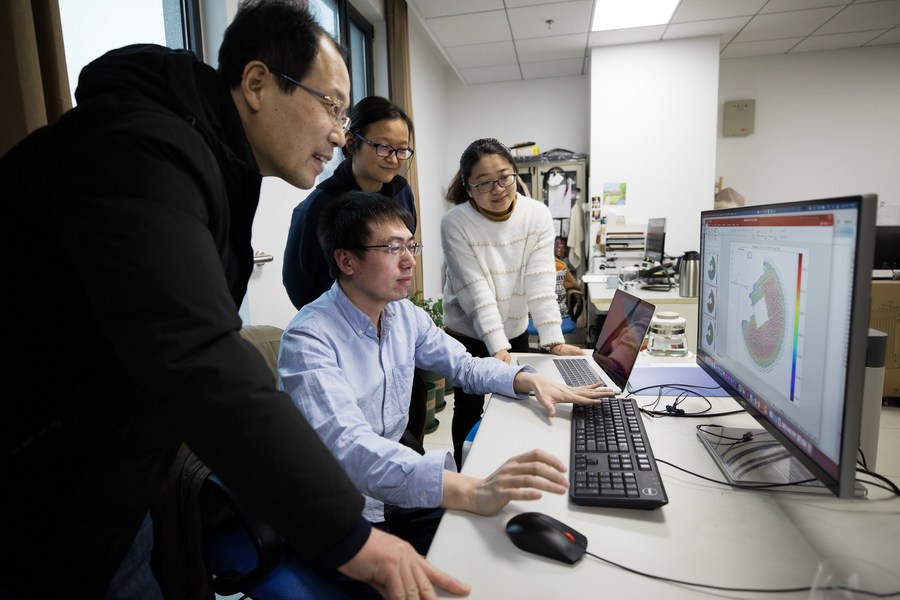
Researchers talk about scientific data at an office of the IHEP under the CAS in Beijing, capital of China, on Jan. 19, 2021. (Xinhua/Jin Liwang)

File photo taken on April 27, 2019 shows an aerial view of China's LHAASO under construction in Daocheng, southwest China's Sichuan Province. (Xinhua/Jin Liwang)

Some researchers of China's LHAASO pose for a group photo at the IHEP under the CAS in Beijing, capital of China, on Jan. 19, 2021. (Xinhua/Jin Liwang)
Scientists led by the Institute of High Energy Physics under the Chinese Academy of Sciences made the discoveries after an 11-month observation using the completed half of the installation.
Scientists have also detected photons with energies exceeding 1 peta-electron volt (quadrillion electron-volts or PeV), 100 times more energy than the record high achieved by any manmade accelerator on Earth. One photon with an energy of 1.4 PeV was detected, the highest value ever observed by humans.
"These findings overturn our traditional understanding of the Milky Way and open up an era of UHE gamma astronomy. These observations will prompt us to rethink the mechanism by which high-energy particles are generated and propagated in the Milky Way," said Cao Zhen, chief scientist of LHAASO.
"In addition, these observations will encourage us to explore more deeply violent celestial phenomena and their physical processes, as well as to test basic physical laws under extreme conditions," Cao said.

File photo taken on April 27, 2019 shows an aerial view of China's LHAASO under construction in Daocheng, southwest China's Sichuan Province. (Xinhua/Jin Liwang)
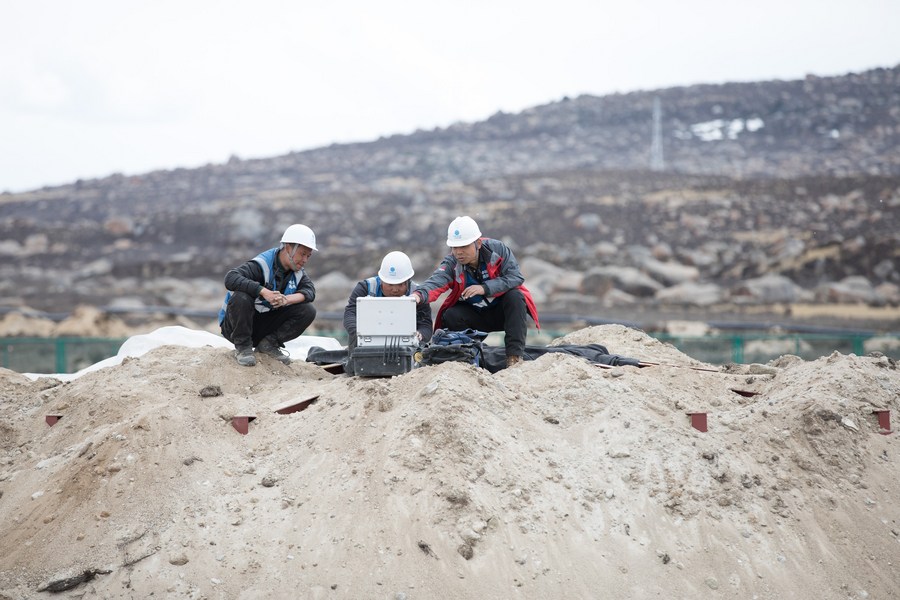
File photo shows researchers of China's LHAASO He Huihai (R), Xin Guangguang (C) and Yuan Xiangfei talking about scientific data, on April 28, 2019. (Xinhua/Jin Liwang)
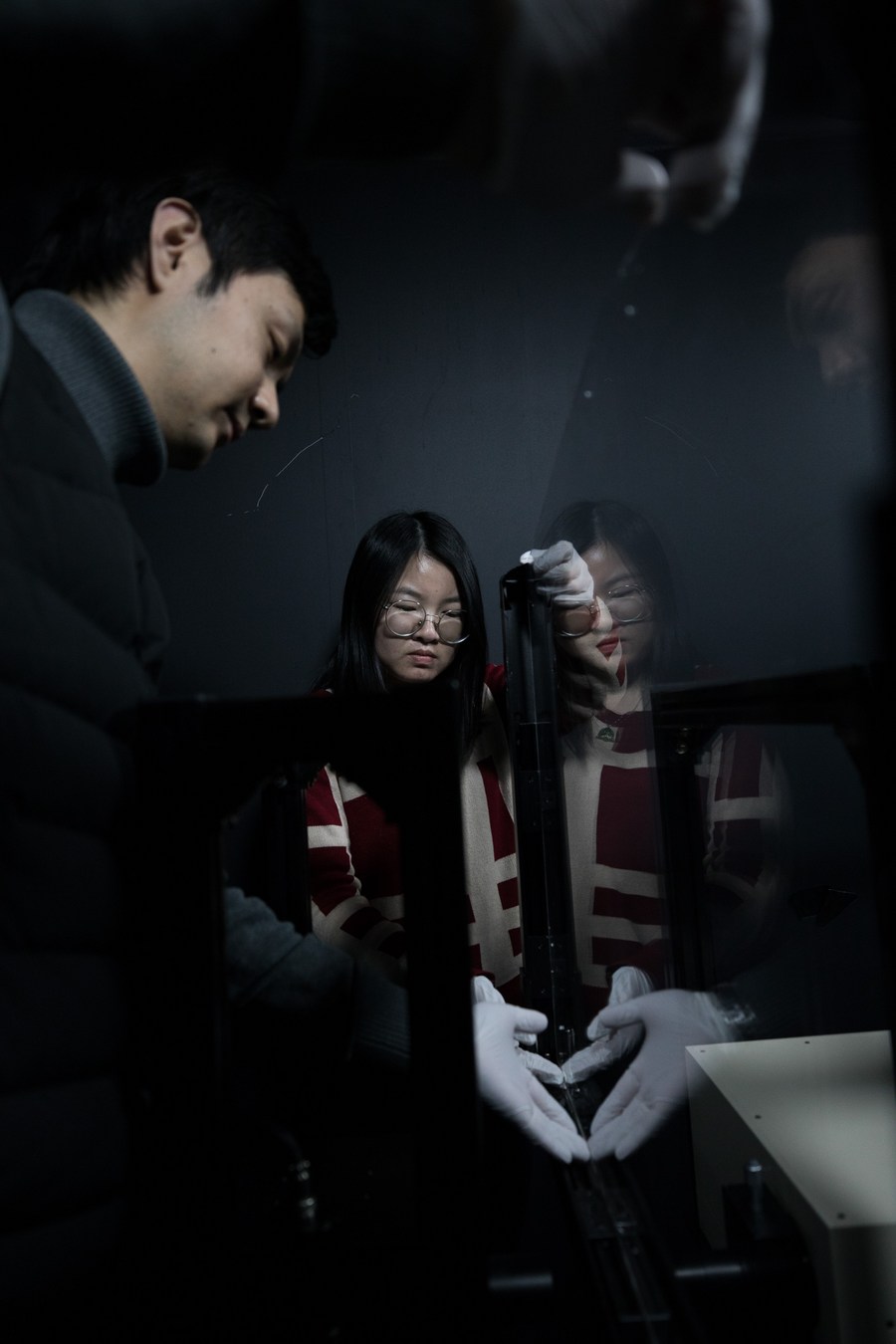
Researchers debug devices at a laboratory of the IHEP under the CAS in Beijing, capital of China, on Jan. 19, 2021. (Xinhua/Jin Liwang)
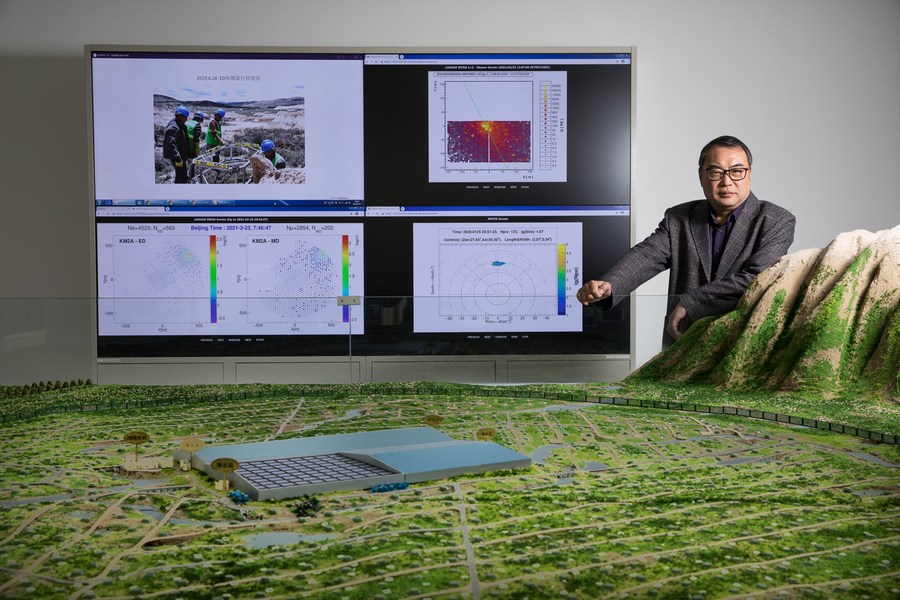
Cao Zhen, a researcher at the IHEP under the CAS, poses for a photo in front of a sandtable of China's LHAASO, in Beijing, capital of China on Feb. 23, 2021. (Xinhua/Jin Liwang)
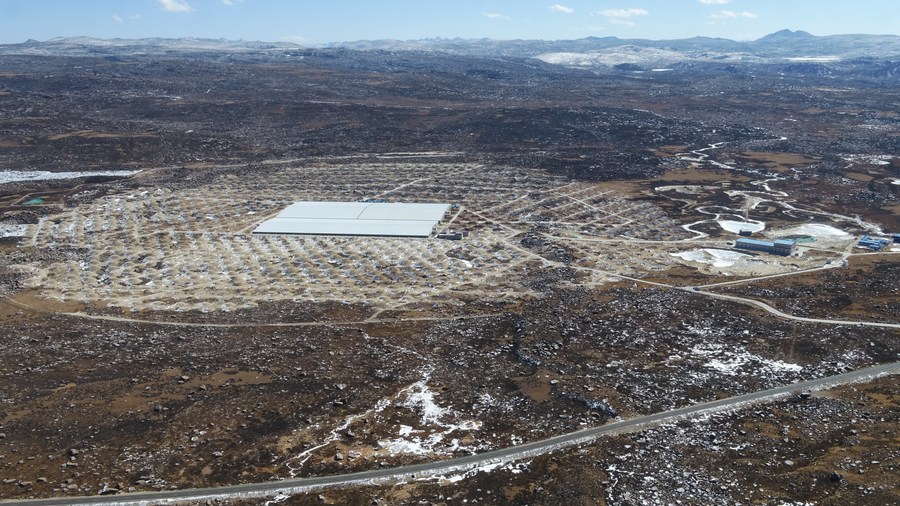
Aerial photo taken on Feb. 2, 2021 shows China's LHAASO in Daocheng, southwest China's Sichuan Province. (IHEP/Handout via Xinhua)

File photo shows Dr. Zhang Shoushan (front) and a staff member conducting maintenance at China's LHAASO in Daocheng, southwest China's Sichuan Province, April 28, 2019. (Xinhua/Jin Liwang)
Through UHE gamma astronomy, a century-old mystery -- the origin of cosmic rays -- may soon be solved, Cao added.
"These findings bring us closer to understanding the origins of extremely high-energy cosmic rays," said Karl Ziemelis, chief physical sciences editor for Nature.

Photo provided by IHEP under the CAS shows construction site of the LHAASO in Daocheng County, southwest China's Sichuan Province, Feb. 28, 2019. (Xinhua)
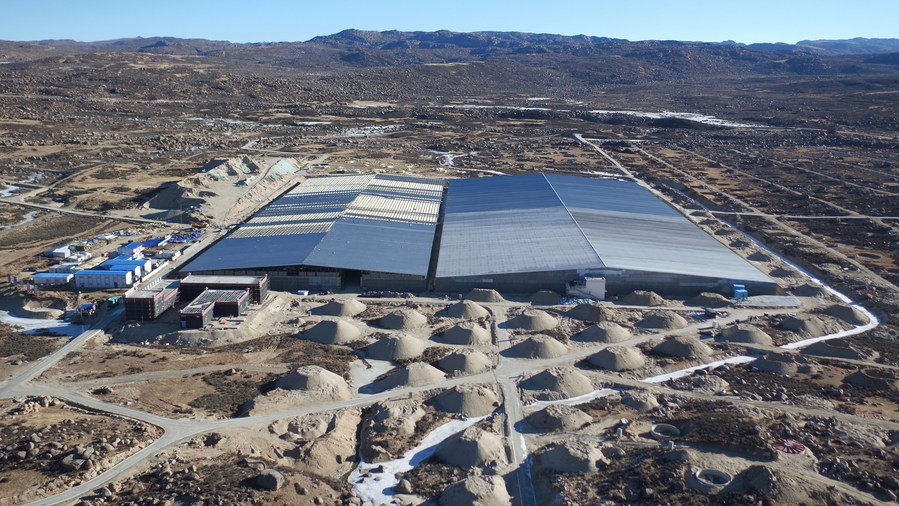
Aerial photo provided by the IHEP under the CAS shows the LHAASO under construction in Daocheng County, southwest China's Sichuan Province, Jan. 18, 2019. (Xinhua)

Photo taken on April 26, 2019 shows Cao Zhen, a researcher at the IHEP under the CAS, launching scientific observation and introducing the research data during the ceremony of LHAASO Scientific Observation and unveiling of Tianfu Cosmic Ray Research Center in Chengdu City, southwest China's Sichuan Province. (Xinhua/Jin Liwang)■




